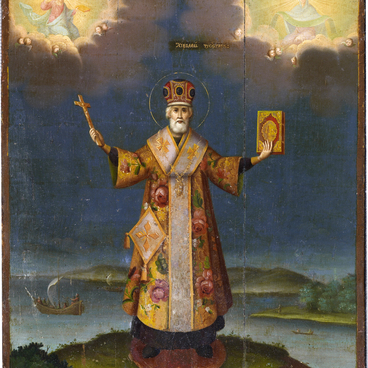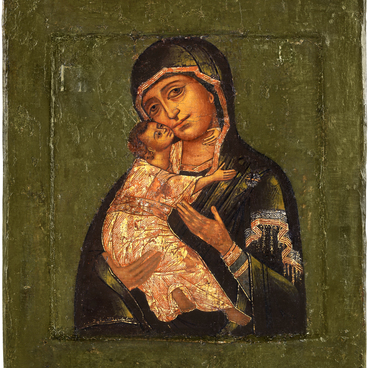Elijah is a prophet in the Old Testament; his hagiography is mentioned in the Third and Fourth Books of Kings. In Christian tradition Elijah the Prophet is considered as foreshadow of Christ and forerunner of John the Baptist who baptized the Savior. Elijah was especially venerated in Russia’s north, and his iconography originated from those regions. Fiery Ascension of Elijah the Prophet was painted more frequently in hermitages of the old believers for whom fire symbolizes absolution.
The icon from the collection of the Rybinsk Museum Reserve was made in the first half of the 19th century, assumingly by craftsmen from Rybinsk or Yaroslavl. Even though the icon painting style popular at the time was the so-called fryazhsky or foreign style in the vein of West European temple artwork, that image was painted in the traditional style. The space is flattened by the absence of shadows. The objects are conventionalized, the folds of the clothing are painted with sharp broken lines, rather than being pictorial and soft. The events in the background are not toned down by a light haze symbolizing remoteness, and the background story appears on equal footing with the foreground details.
The icon from the collection of the Rybinsk Museum Reserve was made in the first half of the 19th century, assumingly by craftsmen from Rybinsk or Yaroslavl. Even though the icon painting style popular at the time was the so-called fryazhsky or foreign style in the vein of West European temple artwork, that image was painted in the traditional style. The space is flattened by the absence of shadows. The objects are conventionalized, the folds of the clothing are painted with sharp broken lines, rather than being pictorial and soft. The events in the background are not toned down by a light haze symbolizing remoteness, and the background story appears on equal footing with the foreground details.

